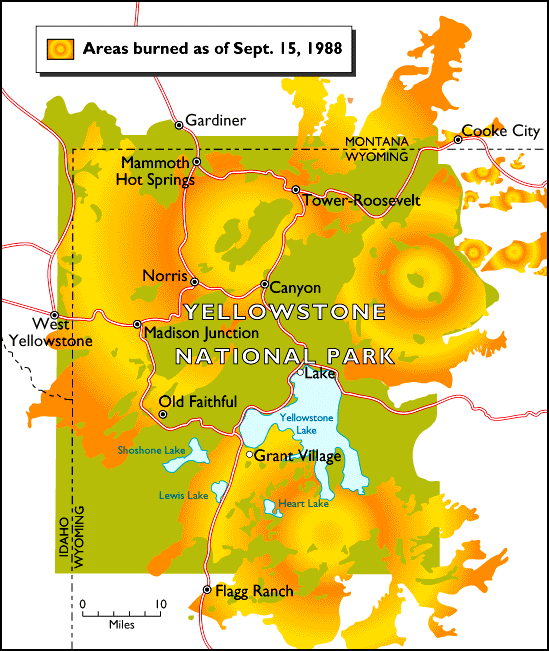Stewardship of Public Lands: Fire in Yellowstone Park and the American West
Botany, Geography, or History 4920
Students in the Park
(CSUCI)
Stewardship of Public Lands, American Democracy Project through ASSCU
Yellowstone National Park -- National Park Service
Forest and Rangelands provides information about fire management by state.
The National Interagency Coordination Center provides current information about fires in various regions.
The Center for Educational Technologies at Wheeling Jesuit University: Exploring the Environment problem-based learning modules.
Utah Division of Forestry, Fire & State Lands
Utah Administrative Code for Wildland Fire
NOVA Series Fire Wars, broadcast 2002
Wikipedia article on Wildfire
Texts:
The Wildfire Reader: A Century of Failed Forest Policy, ed. George Wuerther
http://www.cotf.edu/ete/modules/yellowstone/YFsituation.htmlThe class is part of a national effort through the American Democracy Project to involve students in civic learning experiences.
The class is a hybrid course -- some work will be done on line, some face-to-face. The course will be the first block of summer semester. Students will spend one week in Yellowstone Park, June, 2013.
This class is a team taught exploration of issues about fire management in protected lands in the American West with Yellowstone Park as the prime example.
In Yellowstone National Park, the fire season usually lasts from June to early September. In 1988, several factors led to an abnormal fire season. During June of that year, there was little rain and extremely high temperatures and winds. Yellowstone National Park was suffering from severe drought conditions. The drought left Yellowstone more vulnerable to fires than usual. Several fires were started by lightning and several by human activities. By July 21, many thousands of acres had burned. The Yellowstone National Park fires of 1988 were the largest series of fires in the northern Rockies during the last 50 years. The fires of 1988 led to an intense public debate regarding the National Park Service's fuel management policy. This policy stated that fires started by natural causes should be allowed to burn to their natural conclusion.
Students will use the circumstances of the 1988 Yellowstone fire to explore the history of fire management in the American West, the geographical and environmental issues about fire management and recovery, and the public policies based on scientific research and other considerations which become part of that management and recovery.
Student Learning Outcomes. Students completing the course will:
- ...be able to describe the history of wildland fire management in the American West.
- ...be able to describe public policies and laws which have governed wildlife fire management since the National Park and National Forest systems were created.
- ...be able to describe the major concepts concerning fire in protected lands management as rooted in scientific theory and as applied to protected lands such as Yellowstone Park.
- ...be able to describe the geographical and ecological dynamics of wildland fire management in protected lands such as Yellowstone Park.
- ...be able to explain the social and political forces that affect wildland fire management.
- ...increase their skills in research and critiquing diverse types of literature regarding wildland fire management.
- ...increase their skills in writing and verbally communicating ideas drawn from literature reviews, interviews, and personal experience.
Activities in Support of the Learning Outcomes and Criteria for Assessment of Learning:
- 6 online discussion forums based on assigned readings
- 1 field observation journal based on Yellowstone trip
- 1 term research project. This research will be made public.
- 1 public policy paper. This will be made public.
Grades: based on a percentage of points possible:
A = 94 -100%
B = 83 - 86%
C = 73 - 76%
D = 60 - 66%
